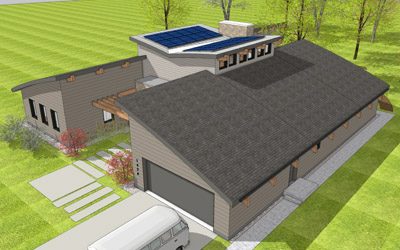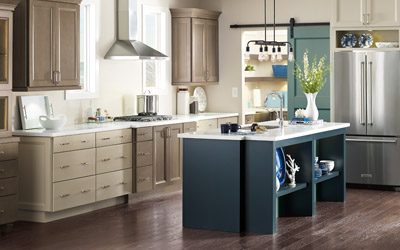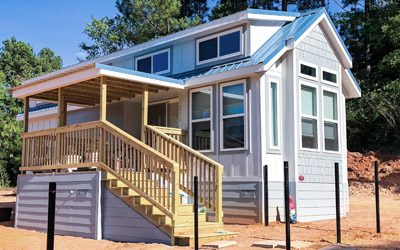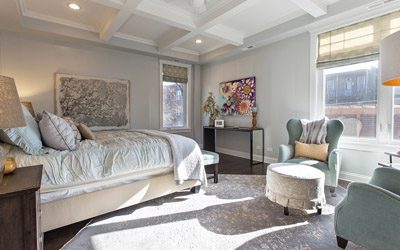Design Trends in 2019 Clients Will Love
- BeachConnection Realty
- Jan 9, 2019
- 4 min read
1. Natural Light and Views

Research shows that natural light can boost healthfulness, both physical and emotional. Our suggestions to clients are to repair or re-glaze windows, add more windows, build a deck, or add on a screened porch.
We want you to know that new glazing can make a big difference to the enjoyment and efficiency of a home, and it’s an affordable update. A quality single window or door with glazing might cost $1,000. An entire wall of glass may run $5,000 to $10,000, but the return on investment can be huge if it captures a view or lightens a dark space.
2. Resiliency and Sustainability

Natural disasters are occurring more frequently and sometimes with little warning. Some designs for safer houses include over-sized gutters and downspouts that direct water to rain gardens or other landscape features that can handle intense rain. It is also recommended that you have an ice and water shield on the roof to create a rain barrier, so the interior has greater protection. Coastal homes should add hurricane straps where the roof and walls intersect, he says, to reduce possible wind damage. Sustainable features are also critical to de-carbonize the built environment and conserve resources. All-electric systems, including induction cooktops, mini-split HVAC systems, and heat pump water heaters are favored. Homeowners could take it a step further and have the garage wired to be a charging station for electric cars and add solar panels to the roof.
Direct clients to experts who know how to build and remodel houses to withstand the weather and keep energy costs down also know how and where products and materials are made, since more buyers are asking, says Amanda Mason, senior design director at Chicago-based Belgravia Group. You can increase your knowledge by obtaining the National Association of REALTORS®’ Green Designation or attending a green-building conference.
3. Away With Gray

Color swings keep rooms fresh, but what may appeal often depends on how trend-focused the locale is, along with the age and style of the home. According to Sue Wadden, director of color marketing at Sherwin-Williams, “Grays are now in the midst of a warming trend.” It’s back to more white and off-whites. Clients are seeking a more neutral, calm background.
When it comes to cabinetry, colors are becoming more robust nationwide. Manufacturer MasterBrand Cabinets has found blue tones are becoming more popular, while teal, sage, and olive colors are making inroads. But when it comes to selling, color expert Amy Wax generally recommends being more cautious and favoring lighter colors that convey an easy-to-decorate, move-in atmosphere.
Learn preferences of buyers in your market, which may require asking paint store salespeople, designers, architects, and color experts. Then share what you learn with clients. “You can help buyers find a look by showcasing an updated aesthetic that doesn’t feel contrived,” Wadden says.
4. Natural Materials and Motifs

After so much focus on clean, spare Scandinavian design, there’s yearning for more warmth and comfort with natural touches. In fact, some experts say sitting in your living room should evoke the feeling of lying in a hammock under a great tree on a breezy summer day. To get the look, it is suggested to do prints and florals in natural-colored tones. Butcher block kitchen countertops and a mix of warmer natural materials such as wood, leather, silk, and stone will help capture the natural feel. Chicago designer Steve Kadlec suggests open grain oak cabinetry, metallic linen draperies, saddle leather, and woven cotton rugs. A warmer, more natural glow can also be illuminated through new LED lights, says Chicago designer Tom Segal, of Kaufman-Segal Design.
Your sellers don’t have to revamp rooms completely. Make suggestions on incorporating a few pieces to get the look. You can capture a concept with a single well-chosen piece. Make it bold, beautiful, and memorable, and your listing will stand out in buyers’ minds.
5. Affordable Microhouses

Affordability is in great demand, with rising home prices and a shortage of desirable downtown locations. “What’s needed is more dense land planning, common outdoor space, greater acceptance of attached homes, and sometimes doing without a garage,” says architect Bill Ramsey with KTGY Architecture and Planning’s Denver office. What’s considered livable yet affordable often needs to be larger than tiny homes, most of which are less than 500 square feet. John Hunt, president of Atlanta-based MarketNsight, a research firm focused on the building industry, thinks there’s a more viable option: microhouses, which range from 500 to 1,000 square feet. They fit community codes for permanent housing, unlike tiny homes that often must be built atop trailers due to their modest square footage. Microhouses also offer equity, unlike rental microapartments. They can be constructed as narrow townhouses or as a one-story, single-family designs. Home builder Jim Chapman Jr. recently received approval from the city of East Point outside Atlanta for 40 microhouses, each between 500 and 1,000 square feet on a 7.69-acre historic downtown site. Prices will start in the high $100,000s.
This small livable option can be a good investment for your buyers. Find out if there are any developments in the works in your market. “Many pay higher prices for lower-square-foot rentals,” Hunt says.
6. High and Low Decor

Why it’s happening: For the millennial generation, quality supersedes quantity. But this isn’t limited to their desire for smaller, better homes. It also applies to what they choose to put inside their homes when they decorate. It’s not about keeping up with the Joneses. How they live dictates their choices. They’re very practical about the money they spend, often researching and gathering ideas from sites like Houzz and Pinterest that mix high and low, and then asking experts to cull and complete a look.
Finished projects might translate into a combination of luxury vinyl planks—which are more practical than expensive real wood boards—and furnishings from readily available online resources like Wayfair, Crate and Barrel, and Arhaus. The benchmark isn’t how fancy or rare something is, but if it’s practical, gives them the right experiences, and nourishes their spirit.
When buyers ask for guidance once they move in, communicate that practicality should be their main mantra.
"Like" us on Facebook at https://www.facebook.com/beachconnection/




Comments